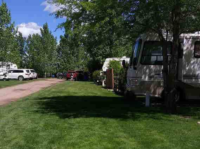Active shooter presentation speaks to importance of collaborative response
By Al Beeber - Lethbridge Herald on December 8, 2021.
LETHBRIDGE HERALDabeeber@lethbridgeherald.com
The need for a collaborative response to active shooter situations was discussed Tuesday by first responders and community partners in a first-of-its-kind in Canada presentation.
The presentation, held at the U of L Theatre, also addressed the impact on community and steps which can be taken to prevent such events.
Two of the speakers who were at the scene the day 17 people including 14 students and three staff were killed at Marjory Stoneman Douglas High School in Parkland, Florida on Feb. 14, 2018 talked to media during a lunch break about lessons learned from the tragedy which also injured 17 people.
Coral Springs city manager Frank Babinec, who was the chief of the Coral Springs-Parkland Fire/EMS, and retired Coral Springs police chief Tony Pustizzi addressed their experiences and insights with participants who included first responders and others.
One of the organizers, Lethbridge Police Service constable Matt Schoenroth, said he heard Pustizzi speak in Seattle and felt he needed to be heard in Lethbridge. But then the COVID-19 pandemic hit and plans for a presentation here were delayed.
“I’m really proud of the collaboration we’ve had today; nobody ever gave up on it,” Schoenroth said of the event.
As Pustizzi talked about the shooting in Seattle, Schoenroth “came to realize the impact it had not only on the police service and the fire department but the community as a whole. So that’s why we thought it was really important to bring him up to Lethbridge so that we could have all community partners come together and see the presentations,” he said.
“Some of the takeaways are the totality of the circumstances. So some of the things he’s talked about are threat cues leading to the event, he talks about how there were several safety mechanisms in place that either got missed or forgotten or they weren’t trained properly. Also talking about police response and how we need to make sure we’re up to date on what’s the most current practice, best practice,” he said.
Deputy fire chief Gerrit Sinke said “the key takeaway for me today is we need to collaborate. To hear from those that have actual experience is very educational. Within the Lethbridge Fire Department in collaboration with Lethbridge Police Service as well as Chinook Regional Hospital, we’ve done several training initiatives and we’ve learned a lot over the last number of years but the information that we receive today will spur on new training initiatives, said Sinke.
In terms of high-risk, low-frequency events, Sinke said “you better be ready when it happens.”
Pustizzi was a 32-year police veteran who was three weeks away from retirement when a 19-year-old former student at Marjory Stoneman Douglas opened fire with a semi-automatic rifle in the deadliest high school shooting in U.S. history.
Everybody was shot in five minutes, Pustizzi said, and the first backups were on scene within three minutes, he said.
Pustizzi said while mentioning a shooter’s name is necessary once, he said media shouldn’t repeat it in subsequent stories to prevent giving the person notoriety.
The former police chief said there was animosity between the police and school system and everybody played the blame game, adding it’s important for everyone to be in the same room for a dialogue.
Babinec said his heart sunk when the active shooter call came in. He was sitting in a conference room with an assistant chief and a salesperson discussing a new piece of apparatus being acquired.
He said Fire and EMS were accustomed to getting calls from the public about plane crashes while pilots practised landings with touch-and-go manoeuvres at an airport and hopes were the call that fateful morning was similar. But it wasn’t. Dispatchers heard gunshots in the background and had multiple calls coming in, he told media, saying the call got “very real, real fast.”
“You start to think what are we going to do when we get there, how are we going to organize things, what actions are you going to take,” he said about responding to the call.
“My philosophy in my whole career in fire services and even now as city manager, is any time we have an incident, an event, anything that takes place that is large in nature… I always look at it and say ‘how could we have done this better?’ And I feel that’s my responsibility,” he said.
“I would say any incident that takes place, something could have been done better. Something could have been done different,” Babinec said.
One of the things Babinec’s department learned after the shooting was the importance of a unified command and having anyone with responsibility being in the same room and part of the decision-making process, he said.
“In this incident, in my opinion, it took longer than it should have taken” to respond, he said.
But he said from an operational viewpoint, the response didn’t have a negative outcome.
“From the fire/rescue side, the survivability of the patients that did survive and the folks that were deceased, the outcomes were not changed.”
“From a fire/rescue perspective, one of the biggest things we saw was just that organizational structure could have been a little more smooth,” Babinec added.
“At the end of the day, it’s extremely important for us to share this experience,” Babinec said.
He said he and Pustizzi hope people walked out of the presentation with something that will allow them to better prepare themselves, their organization or their community should a large-scale event take place.
“That’s the importance of us going back and sharing these types of things,” he added.
Follow @albeebHerald on Twitter
4-3




